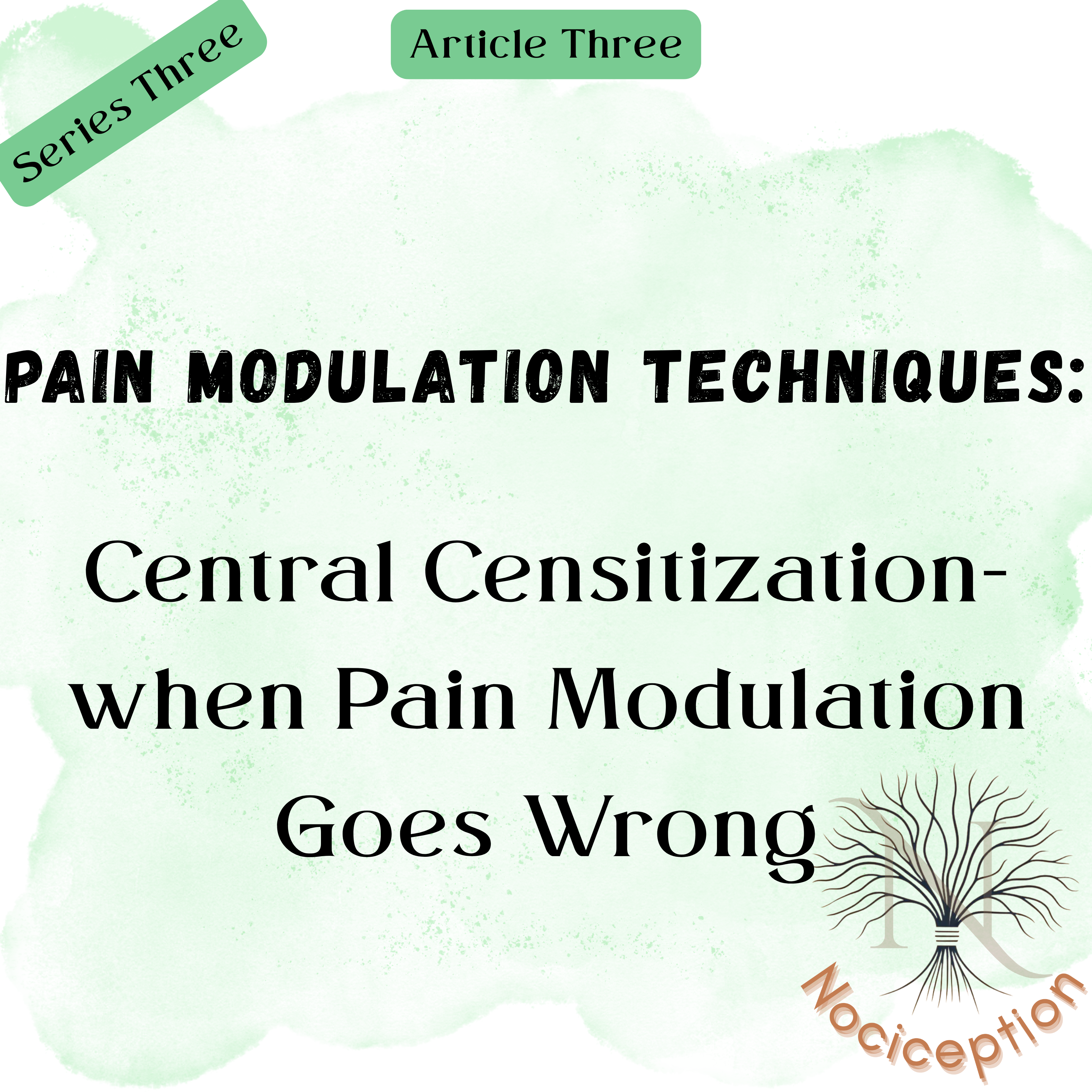Central sensitization is a condition where the nervous system becomes overly sensitive, amplifying pain signals and leading to chronic pain. This article explores the mechanisms behind central sensitization, its impact on pain modulation, and strategies to manage this condition. Links to related articles on pain modulation and non-medical pain management provide further insights.
What Is Central Sensitization?
Central sensitization occurs when the central nervous system (CNS) becomes hyperreactive, amplifying pain signals. Normally, pain serves as a protective mechanism, alerting us to injury or harm. However, in central sensitization, the pain signaling system becomes dysregulated, causing even non-painful stimuli to feel painful. This phenomenon is a hallmark of many chronic pain conditions, including fibromyalgia, migraine, and irritable bowel syndrome.
How Pain Modulation Works—When It Goes Right
Pain modulation involves the body’s ability to enhance or suppress pain signals, ensuring appropriate responses to stimuli. For example, if you touch something sharp, your CNS processes the signal and triggers pain to protect you. In central sensitization, this modulation goes awry, resulting in amplified and persistent pain.
Pain modulation relies on the balance of excitatory and inhibitory signals within the nervous system. Neurotransmitters like glutamate (excitatory) and GABA (inhibitory) play critical roles. When this balance tips toward excitation, the result can be central sensitization.
The Science Behind Central Sensitization
Central sensitization is driven by neuroplasticity—the brain’s ability to adapt and reorganize. While neuroplasticity is generally beneficial, in this context, it reinforces maladaptive pathways that perpetuate pain. This includes:
- Wind-up Phenomenon: Repeated pain stimuli cause an increasing response over time, even with the same input.
- Reduced Pain Thresholds: Normally harmless stimuli, like a light touch, become painful (allodynia).
- Exaggerated Pain Responses: Painful stimuli feel more intense than they should (hyperalgesia).
Causes and Triggers of Central Sensitization
Central sensitization can develop due to:
- Chronic Inflammation: Conditions like arthritis or inflammatory bowel disease can overactivate pain pathways.
- Nervous System Injuries: Spinal cord injuries or nerve damage may disrupt normal pain modulation.
- Prolonged Stress: Chronic stress elevates cortisol levels, which can interfere with pain processing.
- Genetic Predisposition: Some individuals are genetically more prone to heightened pain sensitivity.
Understanding these triggers helps identify at-risk individuals and tailor interventions accordingly.
For an in-depth look at the body’s natural pain modulation, check out “Pain Modulation Techniques: How the Body Naturally Modulates Pain.“
The Role of Neurotransmitters in Central Sensitization
Several neurotransmitters contribute to central sensitization:
- Glutamate: An excitatory neurotransmitter that increases during sensitization, leading to heightened pain responses.
- Substance P: Amplifies pain signals and contributes to inflammation.
- GABA and Serotonin: Reduced levels of these inhibitory neurotransmitters make it harder for the CNS to dampen pain signals.
These chemical imbalances create a feedback loop, worsening the cycle of pain and sensitivity.
Managing Central Sensitization
While there is no cure for central sensitization, several strategies can help manage symptoms:
- Medications:
- Gabapentinoids (e.g., gabapentin, pregabalin): Target overactive pain pathways.
- Antidepressants (e.g., amitriptyline): Enhance inhibitory neurotransmitters like serotonin and norepinephrine.
- Non-Medical Approaches:
- Cognitive Behavioral Therapy (CBT): Helps reframe negative thought patterns that exacerbate pain.
- Physical Therapy: Gentle exercises improve mobility and reduce pain.
- Mindfulness-Based Stress Reduction (MBSR): Combines meditation and yoga to reduce stress and improve pain perception.
- Lifestyle Modifications:
- Sleep Hygiene: Poor sleep can intensify pain; practices like maintaining a consistent bedtime and reducing screen time can help.
- Dietary Changes: Anti-inflammatory diets rich in omega-3s and antioxidants may alleviate symptoms.
For additional practical techniques check out “Exploring Non-Medical Pain Management Strategies”.
The Importance of Early Intervention
Addressing central sensitization early can prevent its progression. Healthcare professionals can use tools like quantitative sensory testing (QST) to assess pain thresholds and identify signs of central sensitization. Early treatment improves outcomes and reduces the risk of long-term disability.
To learn more about how natural chemicals can aid in modulating pain check out “The Role of Endorphins in Pain Relief“.
Central sensitization exemplifies what happens when pain modulation goes wrong, transforming protective pain into a chronic burden. By understanding its mechanisms, triggers, and management strategies, individuals and healthcare providers can work together to alleviate its impact. While central sensitization amplifies pain signals, targeted interventions—from medications to mindfulness practices—offer hope for relief.
Lifestyle changes, early diagnosis, and a multidisciplinary approach are key to managing this complex condition. Central sensitization underscores the importance of treating pain as a multifaceted experience that involves both the mind and body. Through continued research and personalized care, we can better address this challenging condition.

No Responses